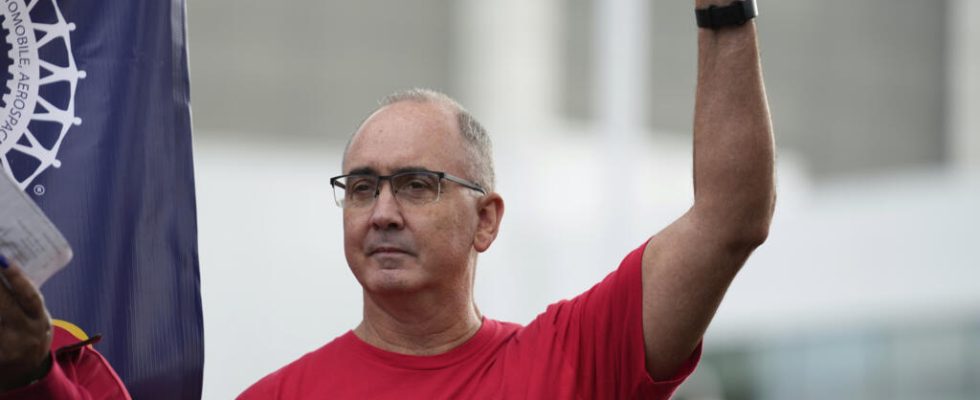As the United States faces the fifth day of a historic strike by auto workers, its union has issued an ultimatum: if the three largest manufacturers (General Motors, Ford and Stellantis) do not give in to demands before Friday noon, the strike will intensify. The workers are demanding in particular a 40% salary increase, the same as that received by the leaders of the “Big Three” over the past four years. At the heart of the demands: Shawn Fain, the president of the powerful American automobile union United Auto Workers.
2 mins
The prestigious American economic daily Wall Street Journal presents Shawn Fain as ” the man who keeps Detroit in suspense », in reference to the American city which has established itself as the metropolis of the automobile.
Since his election as head of the United Auto Workers union five months ago, this 54-year-old former electrician has broken the rules and does not hesitate to directly attack automobile manufacturers: “ All they want in this document are concessions. I will tell you what I will make of their proposals. I’m going to put them where they belong: in the trash. Because it’s waste. »
Shawn Fain promises not to give up on manufacturers. Since the start of the strike, he has appeared alongside the strikers, in videos with a strong communication style and broadcast on social networks, criticizing a “ Two weights, two measures » : « In this country, there is the billionaire class and there are us, the others. They want us to shut up and collect their crumbs. They overdid it, they waited until the last week, so here we are. We have to do what we have to do. »
Shawn Fain’s much more radical style shakes up even the White House: he did not call for the re-election in 2024 of the current Democratic President Joe Biden, a practice that is nevertheless usual for this union. And when asked why he doesn’t support the president, which many refer to as “ pro-union »he answers : ” We expect actions, not words. »
Read alsoStrike in the American automobile sector: “The referee, Joe Biden, has contradictory loyalties”
